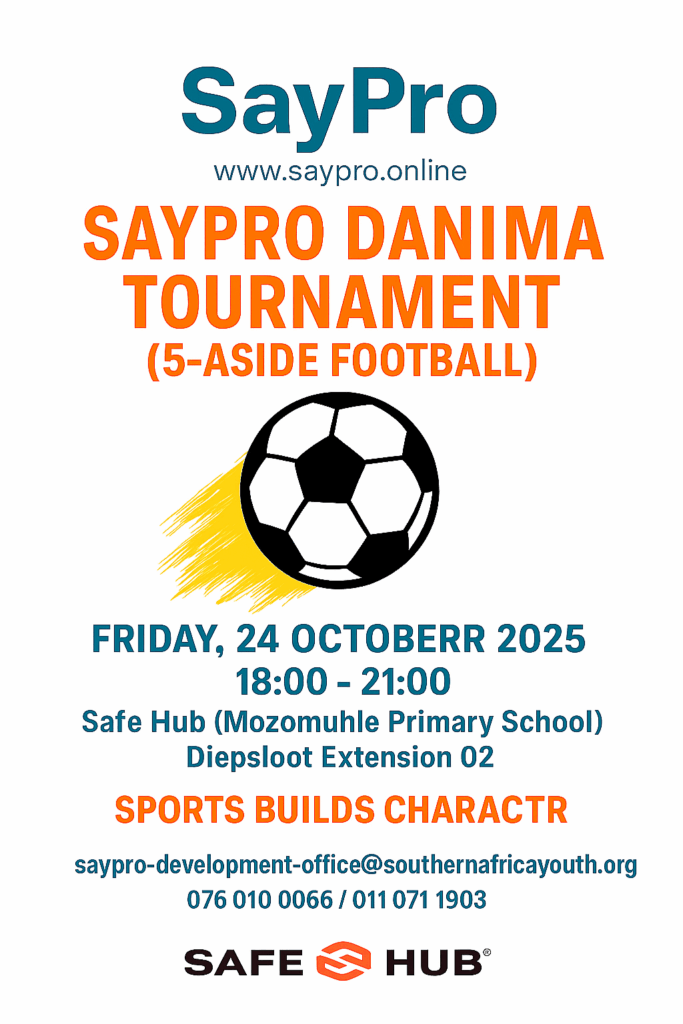To the CEO of SayPro, Neftaly Malatjie, Royal Committee Chairperson Clifford Legodi, SayPro Royal Chiefs and Human Capital
Kgotso ebe le lena
SayPro Chief Development Royalty is delighted to officially confirm your appointment as the March Referee for the SayPro DaniMa Tournament (5-Aside Football), scheduled to take place on 24 October 2025 From 18:00 – 21:00.
Your role as the Referee will be central in ensuring the tournament runs fairly, maintaining discipline on the field, and upholding the spirit of sportsmanship throughout the matches. We believe your presence will bring professionalism and integrity that aligns with the vision of the tournament.
The SayPro DaniMa Tournament is not only about football, but also about creating opportunities for community engagement, teamwork, and development. With your support as Referee, we are confident that the event will be both memorable and impactful for all participants and attendees.
We truly appreciate your commitment and willingness to take on this important role, and we look forward to collaborating with you to deliver a successful event. Further details, including match schedules and coordination, will be shared with you closer to the date.
Thank you once again for being part of the SayPro journey.
My Message shall End Here
Daniel Makano | SayPro Development Specialist | SayPro

